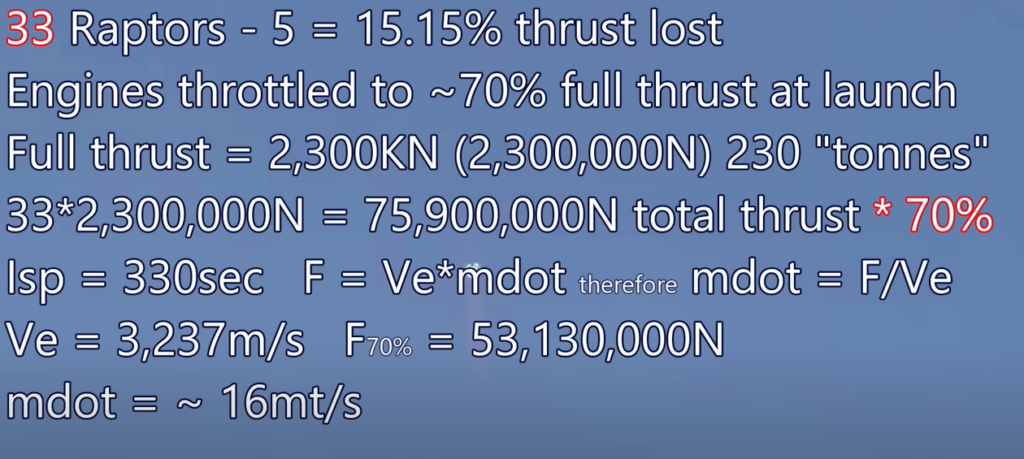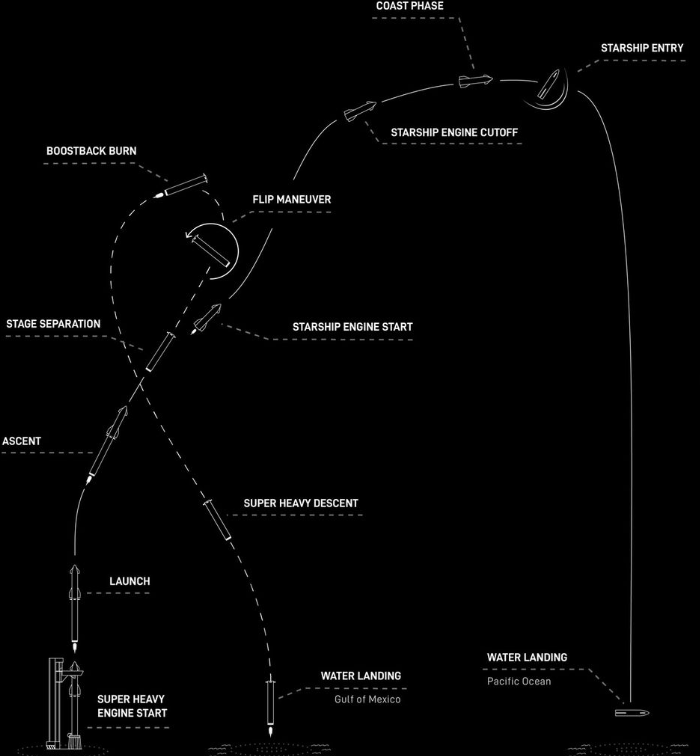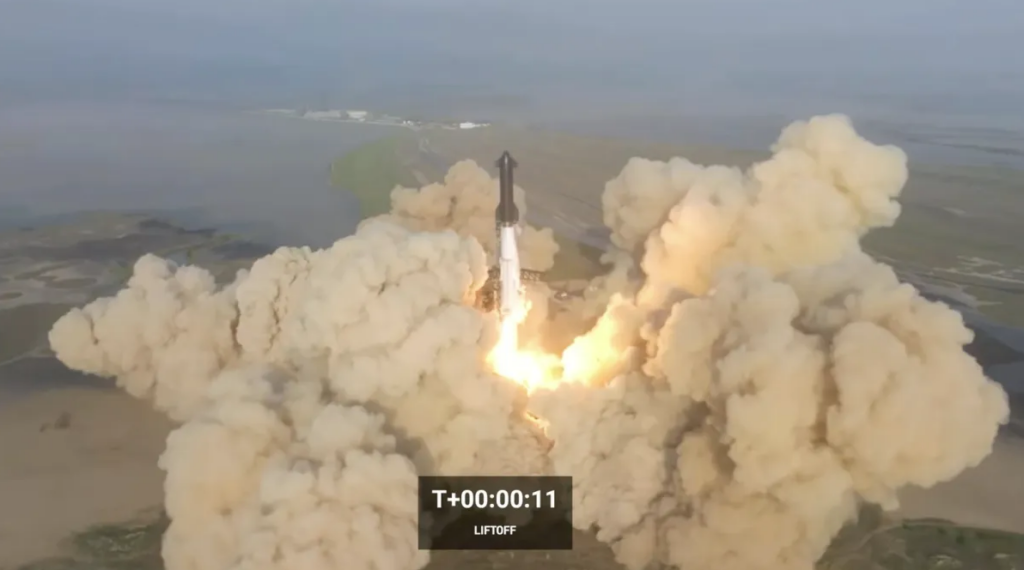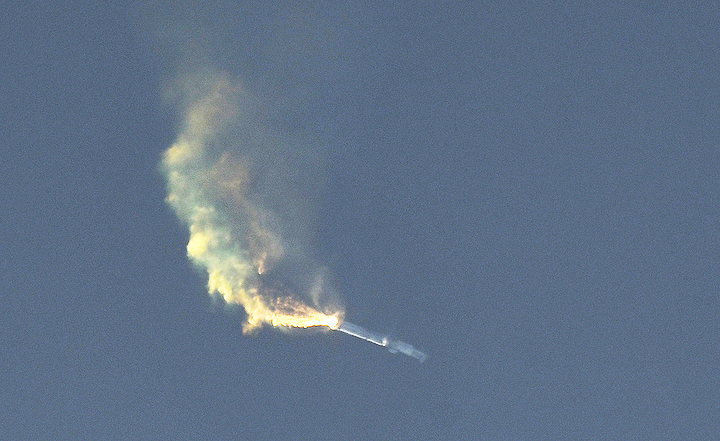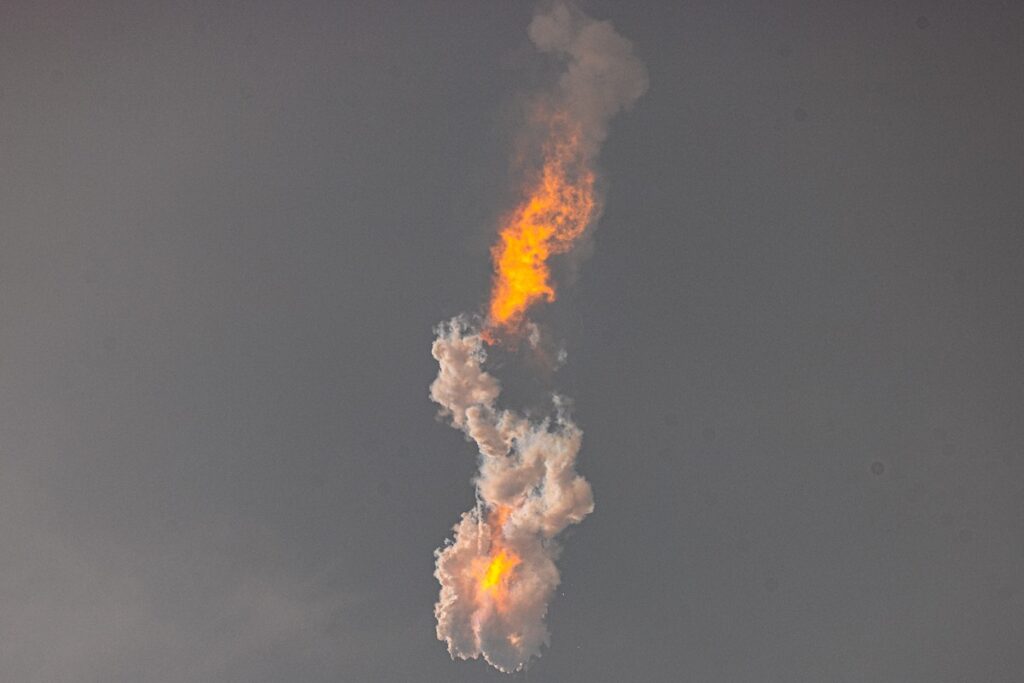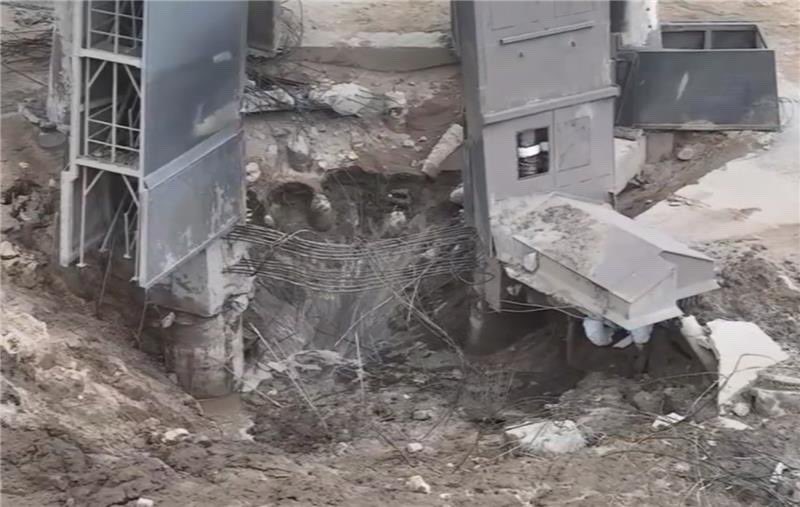SpaceX Starship I sequence of events (IFT-1)
SpaceX Starship I sequence of events (IFT-1)
Mission Flight test #1: B7/S24 (launch 20-04-2023)
Flight objectives
- First Integrated Test Flight IFT-1
- Collecting data from the integrated vehicle (SH with S).
- Liftoff.
- Sub orbital flight.
- Reentry (tiles).
Rocket configuration
- First stage: SpaceX Super Heavy Booster
- 3 minute burn.
- Number: SH7 (B7)
- Second stage: SpaceX Starship HLS
- Number: S24.
Rocket characteristic
- 394 feet (120 meters).
- 16.5 million pounds of thrust at liftoff.
Preparation Starbase
- 16-04-2023 Village evacuated.
- 17-04-2023 Road closed.
- 17-04-2023 Chopsticks to launch position.
- 17-04-2023 Pad closed.
- Starbase Boca Chica
Ground locations
- Launch Control (LC) in Boca Chica, Texas.
- Mission Control (MC) in Hawthorne, California.
- Liftoff from Orbital Launch Mount (OLM) 1 at Starbase Boca Chica, Texas.
- Acquisition of signal: Corpus Christi (TX), Houston (TX). Established 20-04-2023.
Launch window (second attempt, 20-04-2023, successful)
- Opening launch window at 8:28 a.m. CDT (Boca Chica).
- Closure launch window at 9:30 a.m. CDT.
- Window: 62 minute.
- Brief hold at 00:00:40.
- Liftoff at 8:33 a.m. CDT.
Last two hours before liftoff (in T-time)
- 00:00:00 Weather Go.
- 00:00:00 Range Go.
- 00:00:00 Vehicle Go.
- 00:00:00 Payload Go.
- 02:00:00 SpaceX Flight Director (FD) conducts a poll and verifies Go/No Go for propellant loading.
- 17-04-2023 Go
- 20-04-2023 Go
- 01:39:00 Start loading Booster LOX (oxygen).
- 01:39:00 Start loading Booster CH4 (methane).
- 01:22:00 Start loading Ship CH4 (methane).
- 01:17:00 Start loading Ship LOX (oxygen).
- 00:27:00 Finish loading Ship main tanks.
- 00:27:00 Start loading Ship two header tanks CH4 and LOX in the nose.
- 00:20:00 S: CH4 97%, LOX 96% and SH: CH4 74%, LOX 75%.
- 00:16:40 Raptor begins engine chill on booster.
- 00:12:00 S: CH4 97%, LOX 96% and SH: CH4 84%, LOX 85%.
- 00:09:00 Finish loading Ship two header tanks CH4 and LOX in the nose.
- 00:08:00 Pressurising Ship and Booster.
- 00:03:00 Finish loading Booster.
- 00:03:00 All propelant loaded.
- 00:03:00 Guidance system begins its alignment for flight when the configuration is stable.
- 00:02:00 Automated Flight Termination (AFT) armed.
- 00:01:30 TVC (Thrust Vector Control) check. Engine wiggle.
- 00:00:40 Fluid interfaces begin their ventdown sequence.
- 00:00:40 Hold possibility MC. Decision point. Hold can be 15 minutes to still liftoff. Recycling of the clock. Countdown hold for final launch checkouts.
- 00:00:30 Callout FD Go for launch.
- 00:00:15 Callout T-15.
- 00:00:10 Release quick disconnects from the Ship.
- 00:0010 Callout 10, 9, 8, 7, 6.
- 00:00:08 Raptor startup sequence begins.
- 00:00:06 Start electrical ignition (integrated on the ground system). In 4 seconds the sets of 3 banks are ignited.
- 00:00:03 Callout ignition.
- 00:00:02 Callout 2.
- 00:00:01 Callout 1.
First two hours after liftoff (in MET). Best scenario 20-04-2023.
- 00:00:00 Liftoff.
- 00:00:00 Start of MET.
- 00:00:05 Throttle 50%.
- 00:00:08 Throttle 100%.
- 00:00:14 Cleared the tower.
- 00:00:55 Max Q (Moment of peak mechanical stress).
- 00:02:49 Booster Main Engine CutOff (MECO).
- 00:00:00 270 degrees flip.
- 00:02:52 Stage separation.
- 00:02:57 Starship ignition. Second Engine Start (SES). 6 Raptors.
- 00:03:11 Booster boostback burn startup (reignition).
- 00:04:06 Booster boostback burn shutdown.
- 00:07:32 Booster is transonic.
- 00:07:40 Booster landing burn startup.
- 00:08:03 Booster landing burn shutdown.
- Gulf of Mexico off the Texas coast (20 miles or 32 kilometer from Boca Chica).
- 00:09:20 Starship engine cutoff. Second Engine Cutoff (SECO).
- 01:17:21 Starship entry.
- 01:28:43 Starship is transonic.
- 01:30:00 Starship splashdown.
- Pacific Ocean off the Hawaiian island of Kauai.
Results - Engine stack missing Raptors
20-04-2023 in MET
- 00:00:16 2 in outer ring (fixed) and 1 center (tilting) Raptors no thrust. Total of 3 (9%).
- 00:00:40 3 in outer ring (fixed) and 1 center (tilting) Raptors no thrust. Total of 4 (12%).
- 00:01:20 4 in outer ring (fixed) and 1 center (tilting) Raptors no thrust. Total of 4 (12%).
- 00:01:43 5 in outer ring (fixed) and 1 center (tilting) Raptors no thrust. Total of 6 (18%).
- 00:01:52 4 in outer ring (fixed) and 1 center (tilting) Raptors no thrust. Total of 5 (15%).
Results - Speed and altitude based on public observations
20-04-2023 in MET
- 00:00:30 Speed 315 km/h and altitude 1 km
- 00:01:00 Speed 674 km/h and altitude 5 km
- 00:01:30 Speed 998 km/h and altitude 11 km
- 00:02:00 Speed 1552 km/h and altitude 20 km
- 00:02:30 Speed 2152 km/h and altitude 31 km
- 00:03:00 Speed 1783 km/h and altitude 38 km
- 00:03:30 Speed 1715 km/h and altitude 38 km
Mission control audio transcription
20-04-2023 in MET
- 00:00:00 Launch
- 00:00:04 We have liftoff
- 00:00:14 All flight operators procede to procedure 370 post flight operation.
- 00:00:24 Booster chamber pressure is nominal
- 00:00:47 Telemetry is nominal
- 00:00:56 Aquisition of signal Corpus Christie
- 00:01:17 Max Q
- 00:01:39 Aquisition of signal Houston
- 00:02:37 Booster engine cutoff
Mission results - Based on public observations
20-04-2023
Positive
- Collecting of data from the integrated vehicle (SH with S).
- Damage to the tank farm.
- Liftoff.
- Cleared the tower.
- MaxQ.
- Booster did its job getting the Starship up to separation velocity and altitude despite losing several engines.
- Altitude up to 39 km.
- Flight Termination System (FTS) worked.
Negative
- Damage to the Orbital Launch Mount (OLM).
- Sand storm on Port Isabel.
- Tiles fell from Starship.
- Falling debris in the vicinity of the OLM.
- Not all Rapors running.
- Stage separation did not start. Planned for 00:02:52.
- Flight Termination System (FTS) on both the SH and the S activated successfully and safely ending of the mission. Flight ended in a RUD (rapid unscheduled disassembly) at 00:04:01. Might also have been a autonome self destruct
Mission analysis - Based on public observations. Part I
20-04-2023 in MET
- 00:00:00 Ignition of the 33 Raptor engines. The Starship rocket system is composed of a booster with 33 Raptor engines. 20 of those in a ring around the perimeter and 13 in the center. The second stage currently has three vacuum and three sea level engines.
- 00:00:00 Starship takes a long time to move. Imbalance from the start.
- 00:00:00 Three engines were not operating. One of the center engines (critical for landing the booster at the end of its flight) and a pair of exterior engines. These engines may have been damaged by the splashing concrete of the OLM because the rocket has been on the OLM for a relatively long time from the moment of ignition. The two being out will cause an asymmetrical force producing a moment on the rocket. The software will need to compensate by increasing the power of some of these engines and/or reducing the engine power on the opposite side. Starship can lose a few engines and still survive. 30 engines are still operating at this point.
- 00:00:07 Tip cleared the tower.
- 00:00:16 Rocket cleared the tower (Saturn V took 00:00:08).
- 00:00:21 Some kind of venting. Which is strange because there shouldn’t be any overpressure at this point in the flight.
- 00:00:29 Shockwave, refraction of the atmosphere.
- 00:00:30 Abnormal pattern in the exhaust gases. Probably a valve of a damaged engine has broken and continues to leak fuel.
- 00:00:33 Abnormal pattern in the exhaust gases.
- 00:00:38 Abnormal pattern in the exhaust gases. Aanother engine goes out. We are now down to 29 engines operating and the flight continues. Starship continues to climb despite having lost over 10 percent of its engines.
- 00:00:41 Bleeding
00:01:02 Another shutdown. That’s a total of five engines with 28 engines still operating. Meaning a loss of potential thrust of just over 15 percent. -5 engines = -15,15%
Mission analysis - Calculation
20-04-2023
-
However at launch the engines were only operating at about 70%. When one is shut down the rest can be throttled up to compensate. At launch we had 33 engines.
-
Each one can produce a maximum of 2,300,000N of thrust.
-
This gives a total thrust potential of almost 75,900,000N
-
If we are producing 75,900,000N of thrust and we know that the specific impulse (lsp) of the Raptor engines at sea level is about 330 seconds we can use this equation to calculate mass propellant flow. The equation reads that: Thrust (F) equals exhaust velocity (Ve) times mass propellant flow (mdot).
-
We know the thrust (N) and we can calculate the exhaust velocity by multiplying the specific impulse by 1G.
-
330 seconds times 9.81 m/s2 gives us Ve of 3,237 meters per second exhaust velocity (Ve).
-
Now we solve the equation for the mass propellant flow.
-
Mass propellant flow equals thrust (N) divided by exhaust velocity (Ve) and we said that the engines are about 70 power. That takes our 75,900,00N down to 53,130,000N. We divide that by 3,237 meters per second (Ve) and we get 16,413 kg/second or 16 mt/s.
-
So a little more than 16 metric tons/second mass propellant flow (mdot) on liftoff.
-
As the rocket climbs and burns propellant it will get lighter and the remaining engines will be throttled back to keep the rocket at a Thrust To Weight (TWR) ratio that does not endanger the structure.
-
A thrust away ratio of 1.2 to 1.5 is common at launch.
-
This ratio means that the rocket is experiencing 1.5 G’s of acceleration counting the normal 1G we all live in.
-
Starship has a launch mass with payload of about 5,000 metric tons. Giving it a weight of about 49 million kilograms.
-
Though we don’t know the exact mass of this Starship using
-
That figure means Starship could lose six engines at launch and still have a TWR of 1.26 if the rest of the engines were throttled up to full power.
Mission analysis - Based on public observations. Part II
20-04-2023 in MET
- 00:01:04 Starship has gone through around 1,500 metric tons of propellant so having five engines out at this point does not endanger the flight.
- 00:01:04 Something broke off.
- 00:01:09 Flash.
- 00:01:21 Some more stuttering and though the indicator still shows five engines out at this point. We count six to appear here. Two more and the center engine. Now the graphic now matches what we saw earlier: six engines out but the pattern is different making us think that it’s now 7 engines out.
- 00:01:40 Supersonic.
- 00:01:51 An engine seems to come back on. This should not be possible. Exterior engines cannot re-light. They have their own rapid quick disconnect for each engine. We can’t really on SpaceX graphic now.
- 00:01:57 Flash. Asymmetrical.
- 00:02:00 We expect spinning to break loose the two stages. This artificial gravity is necessary for moving the fuel in the tanks.
- 00:00:00 During spinning, the pressure in this case was greater than during MaxQ.
- 00:02:52 Starship starts to flip. This is the point where we should start to see the stage separation. It didn’t separate. Possible causes that are initially mentioned are:
- Release mechanism was not or not properly activated.
- Torsional friction due to in-flight imbalance.
- Salt from the Boca Chica sea air in the compound.
- Self-welding of metals.
- Torque of the ship moving keeps the retracting mechanism from disconnecting the ship.
- 00:03:59 Booster RUD.
- 00:04:01 Starship RUD. Since the two RUDs did not occur exactly at the same time, they may not have been caused by the two FTS but were a autonome self destruct.
Trajectory best scenario
Starship
SpaceX, founded in 2002 by Elon Musk, has revolutionized the space industry through its innovative reusable rockets and ambitious goals for space exploration. One of the company’s most notable achievements is the Starship launch system, which has seen several successful launches and tests since its inception.
The first successful Starship prototype, SN5, took flight in August 2020, reaching a height of 500 feet before landing back on the launchpad. This was followed by the successful high-altitude flight of SN6 in September 2020, which reached an altitude of 7.8 kilometers before landing. The Starship program continued to make progress, with the successful flight and landing of SN8 in December 2020, reaching a height of 12.5 kilometers and landing in a controlled manner.
However, not all launches have been successful. SN9 exploded upon landing in February 2021, but this did not deter SpaceX’s efforts, as they continued testing with SN10 and SN11, both of which successfully landed. The company then had a string of successful launches, including the first operational flight of starship to orbit in May 2022, and the first successful crewed flight of the spacecraft in November 2022.
SpaceX’s starship launch system has garnered much attention for its reusable design, which is a major step forward in reducing the cost of space launches. The ability to reuse the starship makes space launches more affordable and accessible, which could greatly benefit both commercial and government space programs.
In addition to its cost-saving capabilities, the starship launch system has also been designed with interplanetary travel in mind. SpaceX aims to use the starship to eventually transport humans to Mars and establish a permanent settlement there. The company’s ultimate goal is to make life multi-planetary, and the starship launch system is a crucial component of this vision.
Overall, the history of SpaceX’s starship launches has been marked by significant milestones and breakthroughs in reusable rocket technology. The company’s commitment to innovation and ambitious goals has set it apart from its competitors and positioned it as a leader in the space industry. With continued development and successful launches, the future of space travel looks bright for SpaceX and its starship launch system.
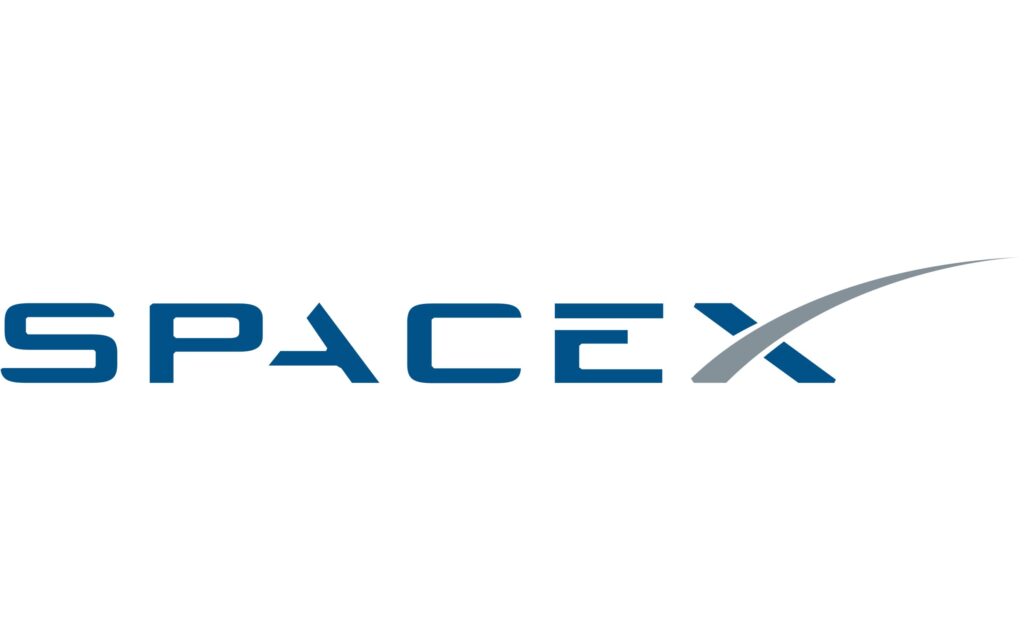
Footnote
- Sources: Aerospace dashboard, SpaceX Starship progress, funkystuff.org
- Outgoing: SpaceX
- Keywords: SpaceX Starship progress, SpaceX sequence, SpaceX Starship I sequence of events. IFT-1, test 1, TF1, SpaceX 1, SpaceX I, SpaceX-1, SpaceX1, OTF1, OTF-1.

